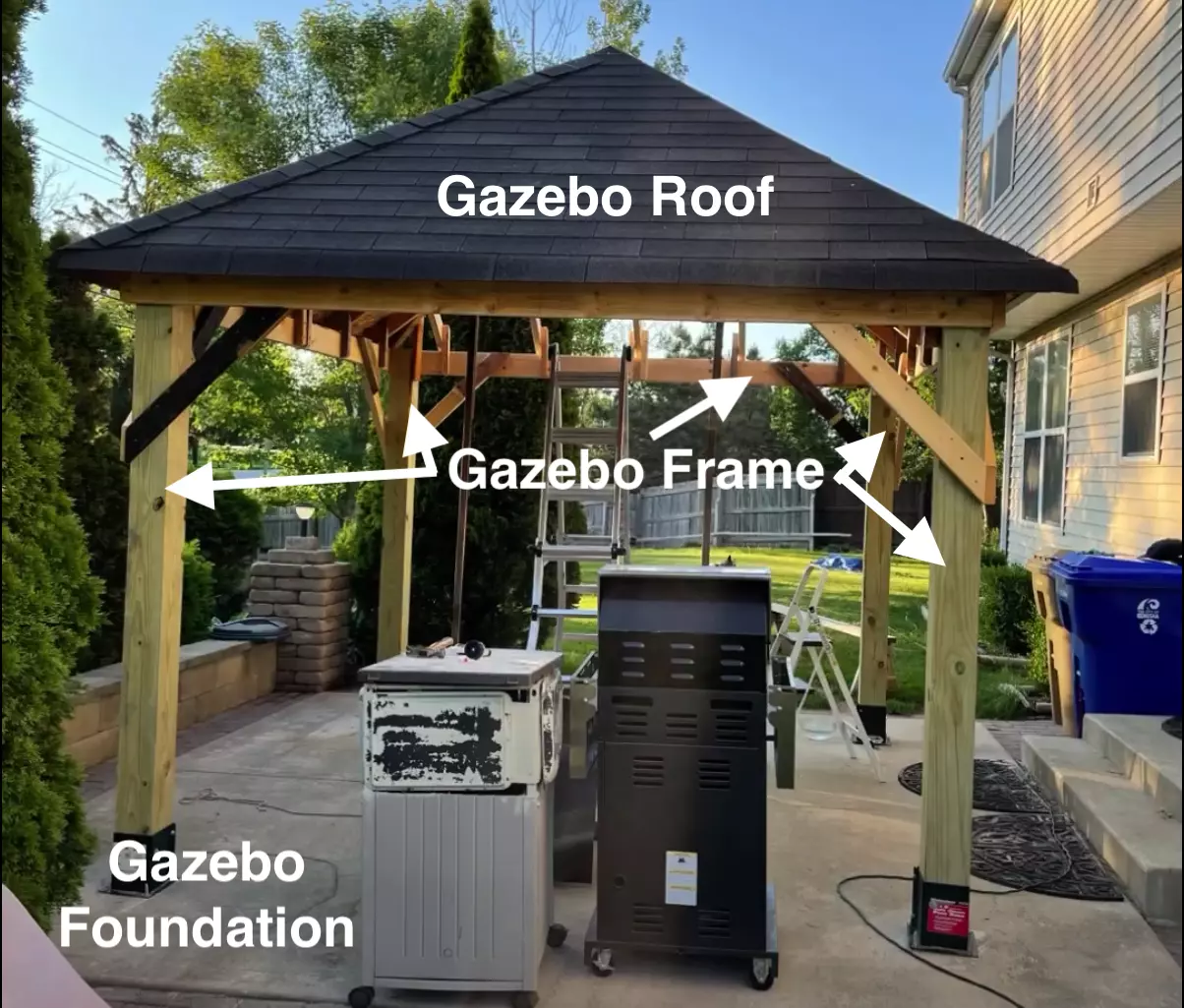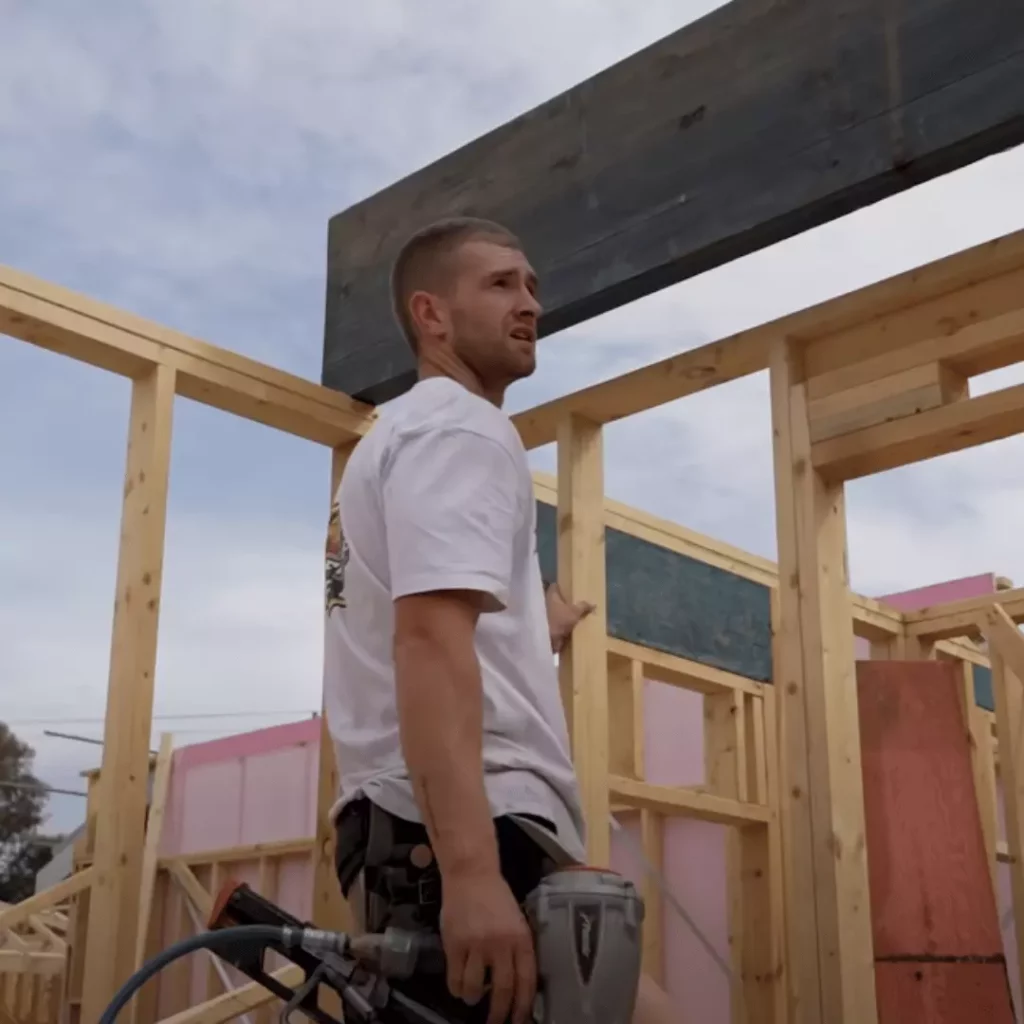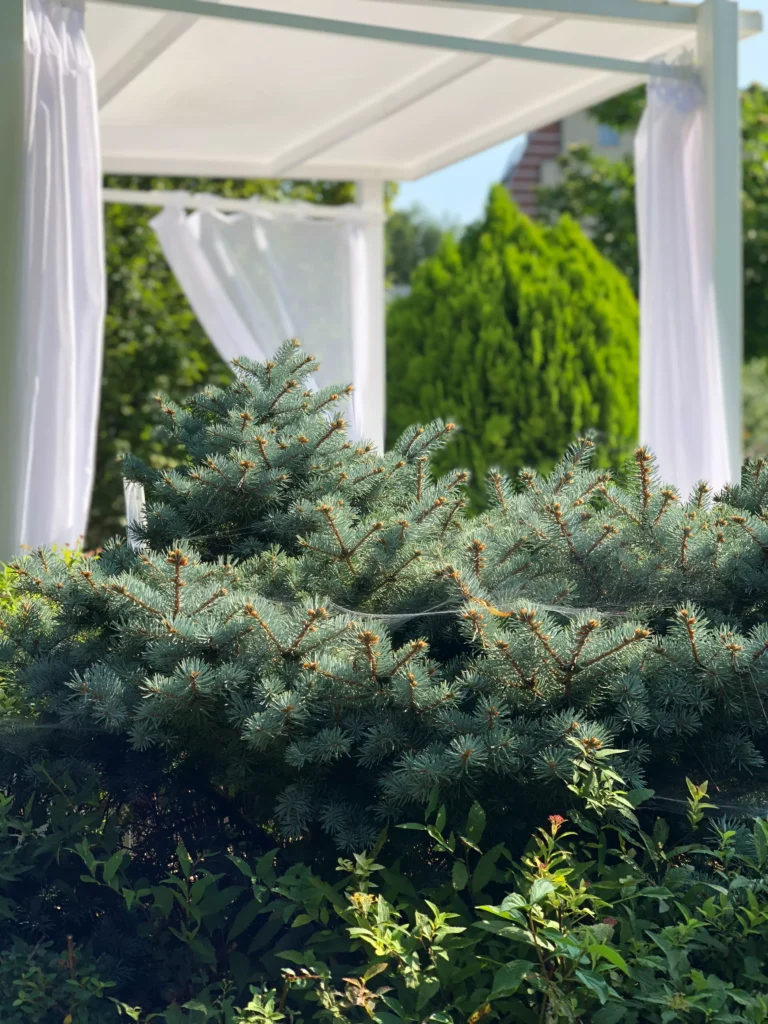Many parts go into making a gazebo, each part having its purpose towards making up the gazebo your ultimate outdoor structure. We recommend that every gazebo owner or any homeowners looking forward to purchasing a gazebo know each part of a gazebo to help them choose the best one and utilize it effectively.
The infographic image shows all the gazebo parts in this post.
Understanding the parts of a gazebo and their purpose helps gazebo buyers ensure they buy a gazebo with the necessary parts to take care of their specific needs and understand what types of gazebo trends can work for them, for example, a barbeque gazebo has different gazebo parts compared to a garden gazebo such as you will find a barbeque with side shelves. In contrast, a garden gazebo has top rails supported by balusters, all serving different purposes but positioned in the exact location – between gazebo posts on the sides of the gazebo.
According to a report by the insurance information institute, 47 percent of homeowners are required to prepare an inventory of their possessions to help document losses for their insurers; knowing your gazebo parts will make it easy for you to locate missing parts, and damaged parts, familiarization with gazebo parts and their purpose can also help prevent damage from occurring in the first place. That is why we have created this guide to know all the different parts of your gazebo.
What is the basic structure of a gazebo?
The basic structure of a gazebo includes the roof, frame, sides, and a floor base; however, modern gazebo structures include additional features, such as gazebo curtains and nettings, privacy screens, side shelves, etc., to improve the functionality and appearance of the gazebo.

Each basic structure parts, such as the roof, frames or support posts, sides, and floor, have additional elements that you will need to know to help you down the road when it comes to building, repairs, maintenance, and renovation of your gazebo.
| Category | Gazebo Parts |
|---|---|
| Gazebo Roof Parts | Ridge Caps, Ceiling Joist, Shingle, Cupola Finial, Roof Slat, Header, Fascia, Shingle |
| Gazebo Frame Parts | Central Hub, Beam, Knee Brace, Post, Baluster, Post Anchor, Bottom Rail, Top Rail, Corner Post, Intermediate Rafter, Short Rafter, Corner Rafter, Ledger, Intermediate Post, Carriage Bolt, Joist, Handrail, Trim |
| Gazebo Foundation Parts | Concrete Pier, Concrete Slab, Post Support, Concrete Pier |
| Gazebo Add-ons | Bench, Skirt Board, Gazebo Curtains & Nettings |
In the sections below, we have summarized the description of each gazebo part, along with the basic elements that make up the part and their purpose.
Parts of a gazebo roof.
A gazebo roof is the top covering of the gazebo. Its main purpose is to keep your gazebo protected from outdoor weather, style and theme your gazebo, and also offer functionality, the choice of your gazebo roof depends on the above factors.
Some of the popular gazebo roof designs include hip roofs, gable roofs, dome roofs, pyramid roofs, flat roofs, and pagoda roofs; we will discuss how each of the gazebo roof elements is designed depending on the roof designs mentioned to keep your gazebo protected from outside elements, style, functionality and also common problems.
Gazebo Shingles.
Gazebo Shingles are the top covering of your gazebo roof; gazebo shingles are made of different materials such as metal, glass, or even fabric stretched over a frame. Gazebo singles style the gazebo roof and give it its desired shape.
To give a hip roof, the shingles are slopped on all sides of the gazebo roof to form a pyramid-like shape; for a gable-roofed gazebo, the roof shingles are sloped at two sides that meet at the ridge in the center of the gazebo. The singles are rounded in a semi-spherical shape on a dome roof gazebo. In a pyramid-roofed gazebo, the shingles are slanted into four equal parts that meet at the center. A flat roof gazebo has its shingles laid out flat, while a pagoda roofed gazebo (popularly known as multi tiers roof gazebo) can take any design mentioned above; however, you will find that other shingles are used and are placed on top of each other to give the gazebo roof a multi roof effect.
Some of the common gazebo roof problems are associated with the roof shingles; this is because they are prone to leaking over time or due to poor installations, which can lead to damaged flashing; other problems associated with gazebo shingles include broken or missing shingles, blown by wind or tree damage, stagnant outdoor and weather elements such as leaves, water, snow, and dust which can clog the gazebo roof downspouts.
Gazebo Ridge Caps.
Gazebo ridge caps are the pieces of the roof that covers the space left by the shingles of each side of the roof, they normally run from the corners of the roof, and all join at the center of the roof.
The main function of gazebo ridge caps is to protect your gazebo from outdoor elements through the spaces left when covering the opposite sides of the gazebo roof; it also enhances the design by emphasizing the roof design.
Some major problems with ridge caps are roof leaks, damaged flushing due to poor installation or damaged ridge caps, and broken or missing ridge caps.
Gazebo Central Hub.
A Gazebo’s central hub is the top part of the roof from which shingles, rafters, and ridge caps radiate; traditionally and in wooden gazebos, the central hub is the topmost part of the center post protruding on the roof, but nowadays, you will find modern central hub made from modified rafters. The main purpose of the central hub is to cover and offer support to the joints created when shingles. Rafters and ridge caps join together.
This is one of the main gazebo parts positioned to experience leaks or poor design when building because it’s the hardest part to build for DIY gazebo builders due to the sheer number of joints from shingles, rafters, and ridge caps; this gazebo part is prone to leaking and can be the first part that if left unrepaired in case flashing occurs, can extend the roof flush to the whole roof.
Another important function of a Gazebo central hub is to support the topmost element of a gazebo roof, called the Cupola Finial.
Gazebo Cupola Finial.
A Gazebo cupola finial is the topmost part of the central hub, mainly used for decorative purposes since it’s the focal point of the roof; mainly, you will find gazebo cupola finial in the hip-roofed gazebo, dome roof gazebo, pyramid roofed gazebo. Some roof designs that feature a missing cupola finial are gable and flat-roofed gazebos.
Some common problems associated with gazebo cupola finials are missing or damaged parts due to weather or environmental influenced damage such as tree damage.
Gazebo Rafters.
To support the top most roofing material or the shingles of the gazebo, there exists support structure underneath the roof made of metal, wood or plastic, etc. the main purpose is to support the topmost roof of the shingles and distribute the weight to the gazebo headers and small frame structures.
Gazebo Rafters also support additional roof elements, such as the Fascia, that will later support additional accessories, such as gazebo curtains/nettings and the gutter system.
Gazebo rafters not only offer support to the roof and overall stability of the gazebo structure but also function as support for décor and functional accessories; for example, they can be used for electrical wiring placement, such as fan wiring, heater placement, lights placements.
Common problems with gazebo rafters include broken, missing, or damaged parts. Due to forces of nature such as wind that can cause vibration, metallic rafters tend to be easily affected by loose bolts, which will lead to roof sounds, and, later, the roof falling apart over time due to a weak raft support system.
There are three types of gazebo rafters that you will find in a common gazebo; they include corner rafters, intermediate rafters, and short rafters.
Gazebo Corner Rafters.
Corner rafters are essential for a gazebo’s structural support and stability. They are diagonal members that are fastened to a pitched roof’s corners. These rafters contribute to the gazebo structure’s overall strength by evenly distributing the weight.
However, issues may occur if corner rafters are not erected or maintained correctly. Improper alignment is one frequent problem that can lead to an unsteady or unbalanced gazebo. Furthermore, weakened or broken corner rafters may not be able to handle heavy loads or bad weather, which could result in collapse or structural failure. To guarantee that the corner rafters stay in good condition and maintain the structural integrity of the building, routine inspections and maintenance are needed.
Intermediate Rafters.
The diagonal components supporting a gazebo’s ceiling are intermediate or common rafters. These rafters provide stability and load-bearing capability by joining the roof structure’s center hub to its exterior margins. However, issues may occur if intermediate rafters need to be correctly placed or constructed.
One typical problem is the rafters sagging or bowing with time, affecting the gazebo’s overall strength and attractiveness. Additionally, if the intermediate rafters are too small or distant from one another, they might be unable to hold the weight of the roof, resulting in structural problems. To ensure the intermediate rafters perform as intended and maintain the gazebo’s structural integrity, routine inspections, and precise installation methods are crucial.
Short Rafters.
Short rafters, commonly called jack rafters, are diagonal components used in gazebos with hip or valley roofs. They support the development of a coherent roof structure by linking the central hub to the intermediate rafters.
Similar to other rafters, short rafters may experience issues if improperly installed or maintained. The short rafters may not be able to handle the weight or tension exerted on them, which is a common problem. This could cause the roof to sag or become structurally unstable, compromising the gazebo’s overall structural soundness. Additionally, an uneven or deformed roof that affects both the gazebo’s appearance and functionality can be caused by improper alignment or angle selection of the short rafters—inspections regularly and correct installation.
Gazebo Fascia.
Gazebo fascial can be made from wood, metal, or plastic materials and is used to cover the end of the rafters from the outside view. The fascia can be wide or narrow depending on your gazebo’s style; it supports the overall roof of the gazebo by joining the rafters and hides the busyness created by the rafters with just one fascia.
Mostly a gazebo roof fascia is used to decorate their gazebo; they normally color the fascia a different color from the roof to enhance the roof color or just for design purposes; for gazebo lacking a horizontal frame; the fascia is used to support additional accessories such as privacy curtains, planters, gazebo curtains, and nettings, etc.
The fascia of the gazebo also serves as a functional gazebo part that can be used to support functional gazebo accessories such as the gutter system and offer gazebo anchor points.
Note: When choosing between the strongest support parts between a gazebo fascia and the header, we highly recommend using the header of the gazebo for supporting gazebo accessories, especially heavy ones, such as planters, curtains, anchor points, etc., only use the fascia if your gazebo doesn’t have the header. The header is stronger than the fascia since it’s part of the gazebo frame, and it’s supported by the gazebo posts anchored to the ground- more about gazebo headers in the gazebo frame section below.
Gazebo Frame.
The gazebo frame is the first part of the gazebo built during construction; its main purpose is to support all other gazebo parts, such as the roof, side panels, and any other additional elements added to the gazebo, such as doors and windows.
It’s important to emphasize the importance of the gazebo frame parts when it comes to supporting the structure stability of your gazebo; if you are buying or building a gazebo, it’s important to make sure your gazebo frame can withstand the weight of the parts that will be attached to the frame, including any other future accessories weight.
For existing gazebo owners, we recommend making sure you understand the condition of your gazebo frame and repairing and maintaining load-bearing beams and supporting parts such as knee braces and horizontal frames; you could be at risk of your gazebo collapsing if the frame is weak or compromised especially during a major weather catastrophe.
What makes the frame strong is the materials used to construct the frame, for example, metal and wood, and also the thickness and quality of the materials used; if you are looking for a permanent gazebo, please consider a gazebo with a high load-bearing frame, however, if you are considering a temporary gazebo, you can choose a gazebo that will be able to hold itself and be easily transported and stored.
The frame of the gazebo is important in determining the shape of the gazebo; for example, the frame determines if the gazebo will be square, rectangle, circle, oval, or octagon, some of the popular shapes of gazebos.
Some of the parts of a gazebo frame include:
Gazebo Post (Popularly Known as Support Post or Pillar)
The post is one of the important support systems of the frame of the gazebo and also the overall gazebo support system; it’s the vertical gazebo part that anchors the gazebo to the ground and also supports the roofing system of the gazebo, gazebo posts also support other gazebo parts such as the walls of the gazebo, and other additional accessories such as doors and windows.
Most gazebo posts are mainly made of metal and wood for permanent gazebos, such as hard top gazebos, and lightweight metal, such as aluminum; for temporary gazebos, such as pop-up gazebos, most wooden permanent gazebo feature 4×4, 6×6, and 8×8 lumber posts.
Gazebo Header (Popularly Known as the Horizontal Frame)
The gazebo header is popularly referred to as the horizontal frame of the gazebo; this is an important support structure that joins and supports the posts of the gazebo and also the rafters of the gazebo; they also support the overall support system of the frame by joining the roof and the vertical posts of the gazebo, if you need a more stable gazebo frame, we recommend considering adding knee braces between the header and the posts, which will improve the strength of your gazebo frame.
The headers are mainly used to support additional gazebo accessories since this is the most strong and secure mounting part for heavy gazebo accessories such as planters, gazebo weights, gazebo anchors, lights, curtains, nettings, doors, windows, etc.,
Some of the problems associated with gazebo headers include broken horizontal frames due to overloading of the roof of the gazebo, such as during snow storms, etc., and also gazebo owners mounting heavy objects that the horizontal beam cannot support, resulting in the header breaking.
Knee Braces (Popularly known as Gazebo Arches.”
Knee brackets are diagonal part of the frame that connects gazebo post to the horizontal posts at a 45 degrees angle; the purpose of the gazebo knee braces is to help support the weight of the roof, and the horizontal frame, the strength which is determined by the materials and the load bearing capabilities of the knee braces is determined mainly by the weight of the roof, for example, you will find a permanent gazebo with the multi-tier roof having stronger metallic knee braces compared to simple gazebo structure with a fabric roof.
Gazebo Floor/ Foundation.
The foundation of the gazebo is one of the first parts laid out during the construction of the gazebo; for a permanent gazebo, we recommend that a thick foundation is required. Since the foundation supports the whole structure, repair, and maintenance problems caused by gazebo foundation problems can be costly, complicated, and time-consuming.
Before building a gazebo in an existing foundation, such as pavers or grass, we recommend ensuring a professional has come in for an inspection to ensure the foundation can support the weight of the gazebo and the foundation is protected over time.
Some common types of foundations that a gazebo can be built on include concrete foundations, wooden foundations, pre-cast concrete foundations, footing foundations, and even sand or grass foundations.

Gazebo foundation parts may vary depending on the type of foundation that you plan on installing for your gazebo; however, the following parts are common, and you will find them in most gazebo foundations.
Gazebo Deck Floor.
One of the prominent gazebo foundation parts is the deck floor; depending on your gazebo design, and materials used, you can build your gazebo deck with wood planks, composite decking, concrete pavers, stone tiles, brick pavers, Vinyl flooring, Porcelain tiles, rubber tiles, artificial turf, and interlocking tiles.
A gazebo deck is attached to gazebo posts with carriage bolts and gazebo joists, which add to the deck’s stability; sometimes, you will find wooden gazebos with ledgers that are horizontal boards that support the gazebo.
When deciding which materials to use for your gazebo deck or when maintaining your gazebo deck, it’s important to note some of the problems we have experienced related to client’s gazebo repair calls to us; some of the problems include wear and tear of the deck, deck settling or sinking, drainage problems, slippery during rainy or snowy conditions, pest such as termites’ infestations, discoloration, and lastly unstable decks due to poor installation or the deck becoming unstable over time.
We recommend regular maintenance and repairs of gazebo decks; some of the services required to maintain a gazebo deck include cleaning, sealing, and re-staining or painting.
Load-bearing Foundation parts.
To support the gazebo to the ground, several load-bearing foundations can be used; they include a concrete pier, concrete slab, sono-tube/Pier and Beam, Concrete footing, Helical Pile, Screw Pile, Gravel Pad, treated wood post, concrete block, and pre-cast concrete load post support foundation parts.
Suppose the load-bearing foundation parts need to be properly designed and constructed. In that case, they might lead to post anchor stability problems, uneven settling of the corner posts, poor drainage, frost heaving, bad load bearing, and pest damage. Load-bearing foundation parts repair and maintenance, including regular inspection, are required since environmental factors can cause cracks, erosion, and settlement around the load-bearing foundation parts.




